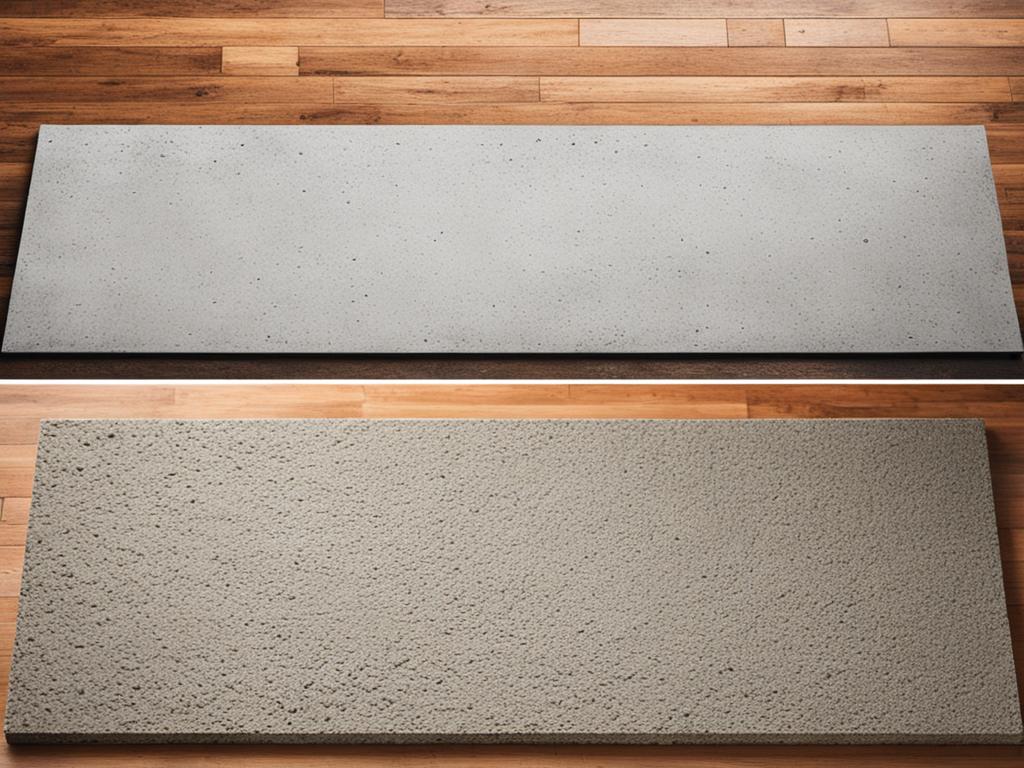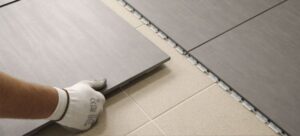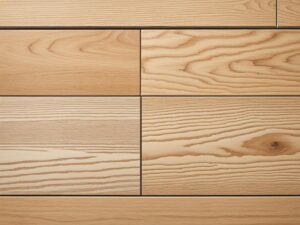When it comes to flooring options, the cost is a crucial factor to consider. In this article, we will compare the cost of concrete slabs and wood floors, helping you make an informed decision for your project.
Key Takeaways:
- Polished concrete floors are generally more cost-effective compared to high-quality hardwood floors.
- The material costs of polished concrete floors are significantly lower than that of hardwood floors.
- On average, hardwood floor installation costs can range from $12 to over $22 per square foot, while polished concrete is generally $3.50 to $5 per square foot.
- Stained concrete floors are also similarly priced to polished floors.
- Considering the cost difference can help you decide the best flooring option for your budget and requirements.
Benefits of Polished Concrete Floors
Polished concrete floors offer numerous advantages that make them an excellent choice for homeowners seeking a durable and visually appealing flooring option. Not only do polished concrete floors provide a modern and unique aesthetic, but they also offer a range of benefits that can enhance the overall value and comfort of a home.
One of the primary benefits of polished concrete is its low and stable material costs. Compared to other flooring options, such as high-quality hardwood floors, the material costs for polished concrete are significantly lower. This makes polished concrete a cost-effective choice for homeowners who want to achieve a high-end look without breaking the bank.
Another advantage of polished concrete floors is their exceptional durability. Polished concrete is highly resistant to wear and tear, making it ideal for high-traffic areas in both residential and commercial settings. The surface of polished concrete is less prone to scratches, stains, and dents compared to other flooring materials, ensuring that it maintains its sleek appearance for years to come.
The installation process for polished concrete is also efficient and convenient. Unlike other flooring options that require extensive preparation and curing time, polished concrete can be installed relatively quickly. The labor-based process allows for pricing to be set in advance, minimizing the risk of cost fluctuations. Additionally, the timing of polished concrete installation can be adjusted to align with other construction activities, offering flexibility for homeowners and contractors.
Furthermore, polished concrete floors offer a range of design options and customization possibilities. With a variety of finishes, colors, and aggregates to choose from, homeowners can create a unique floor design that complements their aesthetic preferences. Whether aiming for a sleek and minimalist look or a bold and artistic statement, the versatility of polished concrete allows for endless creative possibilities.
“Polished concrete floors offer a modern and unique aesthetic, low and stable material costs, exceptional durability, and a convenient installation process.”
Overall, the benefits of polished concrete floors make them an attractive choice for homeowners who value cost-effectiveness, durability, and design versatility. With their unique blend of style and functionality, polished concrete floors provide a practical and visually appealing flooring solution for any residential or commercial space.
Considerations for Concrete Slabs
When deciding between a concrete slab and a wood floor, several factors should be taken into consideration. A concrete slab on grade is well-suited for relatively level sites where the floor level is close to the existing grade. It is also a suitable choice for sites with high water tables or potential flooding, as concrete slabs are poured over granular fill that prevents water from wicking upward. Furthermore, concrete slabs are efficient for hydronic radiant heating systems due to their thermal mass.
However, it is essential to complete all subgrade utility rough ins before pouring the concrete slab, as retrofits can be both challenging and costly. By considering these factors, homeowners can make an informed decision about when to choose a concrete slab over other flooring options.
Advantages of Wood Framed Floors
Wood framed floors offer numerous benefits that make them an appealing choice for homeowners seeking a combination of functionality and aesthetic appeal. According to the second source, wood framed floors present several advantages that contribute to their popularity:
- Versatile Space Utilization: Wood framed floors with a crawlspace or basement underneath provide additional accessible space for running utilities and storage. This flexibility allows homeowners to make the most of their floor area while keeping essential services organized and easily accessible.
- Adaptability to Site Conditions: Wood framed floors are suitable for sloping sites or situations where the floor level needs to be elevated significantly above the existing grade. This adaptability allows for seamless integration with the surrounding landscape while maintaining a level and stable floor structure.
- Enhanced Structural Rigidity: Wood framed floors allow for the use of gypcrete overlays, which can add rigidity and solidity to the floor. This is particularly advantageous when utilizing radiant heat systems, as the enhanced rigidity ensures even heat distribution and a comfortable flooring experience.
“Wood framed floors offer versatile space utilization, adaptability to site conditions, and enhanced structural rigidity, making them an attractive choice for homeowners looking to maximize functionality and comfort.”
These advantages contribute to the appeal of wood framed floors, making them a preferred option for homeowners seeking a durable, versatile, and aesthetically pleasing flooring solution.
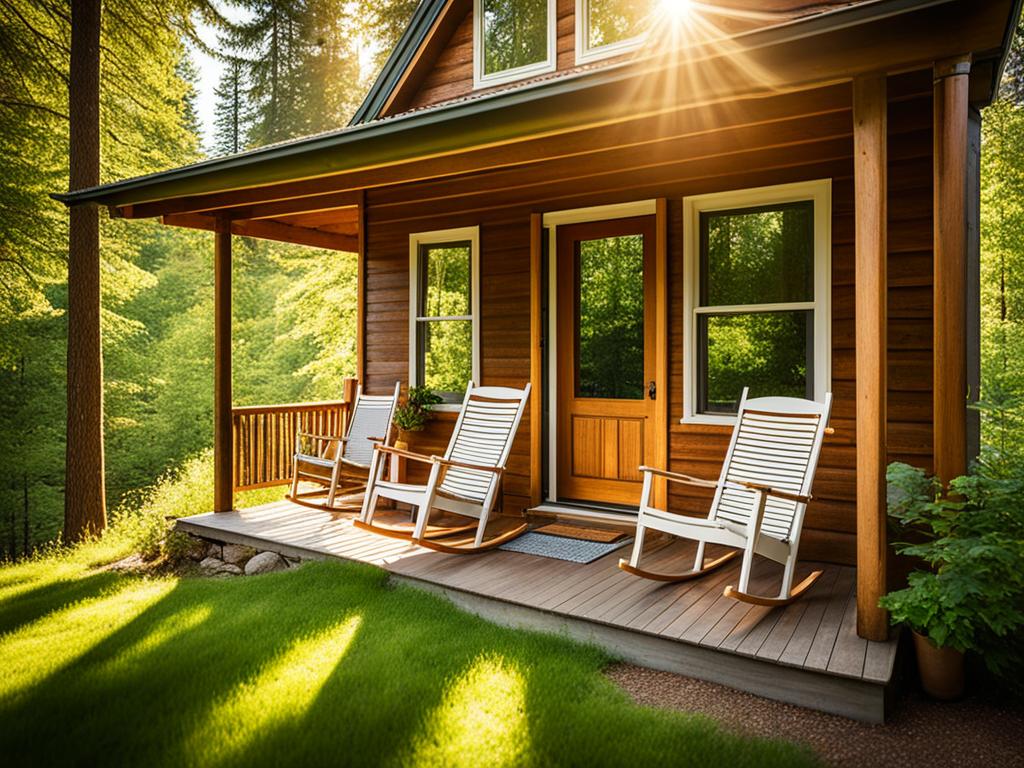
| Advantages | Wood Framed Floors | Concrete Slabs |
|---|---|---|
| Access to utilities and storage | ✔️ | ❌ |
| Suitable for sloping sites | ✔️ | ❌ |
| Enhanced structural rigidity | ✔️ | ❌ |
| Easy integration with radiant heat systems | ✔️ | ❌ |
| Lower installation costs | ✔️ | ❌ |
Creative Options and Versatility of Decorative Concrete Floors
Decorative concrete floors offer a wide range of creative options and versatility. With decorative concrete, you have the freedom to customize various aspects such as stone, color, and finish, allowing you to create a unique and personalized look for your space.
One of the remarkable aspects of decorative concrete is its ability to mimic the appearance of other materials, such as raw hardwood or natural stone, without the high cost associated with them. You can achieve the aesthetic appeal of these materials at a fraction of the price, making decorative concrete a cost-effective choice for those who desire the look of luxury without breaking the bank.
Moreover, decorative concrete can be applied both indoors and outdoors, offering unparalleled versatility. Whether you’re looking to enhance the beauty of your driveways, pool decks, patios, or other areas, decorative concrete provides a durable and visually stunning solution.
Design Options for Concrete Floors
When it comes to design options, decorative concrete offers almost limitless possibilities. Here are a few examples:
- Stamped Concrete: Create the look of patterned stones or bricks with stamped concrete. This technique involves impressing patterns onto the concrete surface to mimic the appearance of various materials.
- Stained Concrete: Add vibrant colors to your floors with stained concrete. This method allows you to customize the color and create stunning effects, such as a marbled or translucent look.
- Polished Concrete: Achieve a sleek and modern aesthetic with polished concrete. This technique involves polishing the concrete surface to a smooth, reflective finish, giving your floors an elegant appeal.
- Decorative Overlays: Transform plain and dull concrete floors with decorative overlays. These overlays can be applied to existing concrete surfaces and come in various designs, patterns, and textures.
Whether you prefer a rustic, contemporary, or traditional look, decorative concrete can be tailored to suit your design preferences. Its versatility allows you to create stunning floors that seamlessly complement your overall interior or exterior aesthetic.
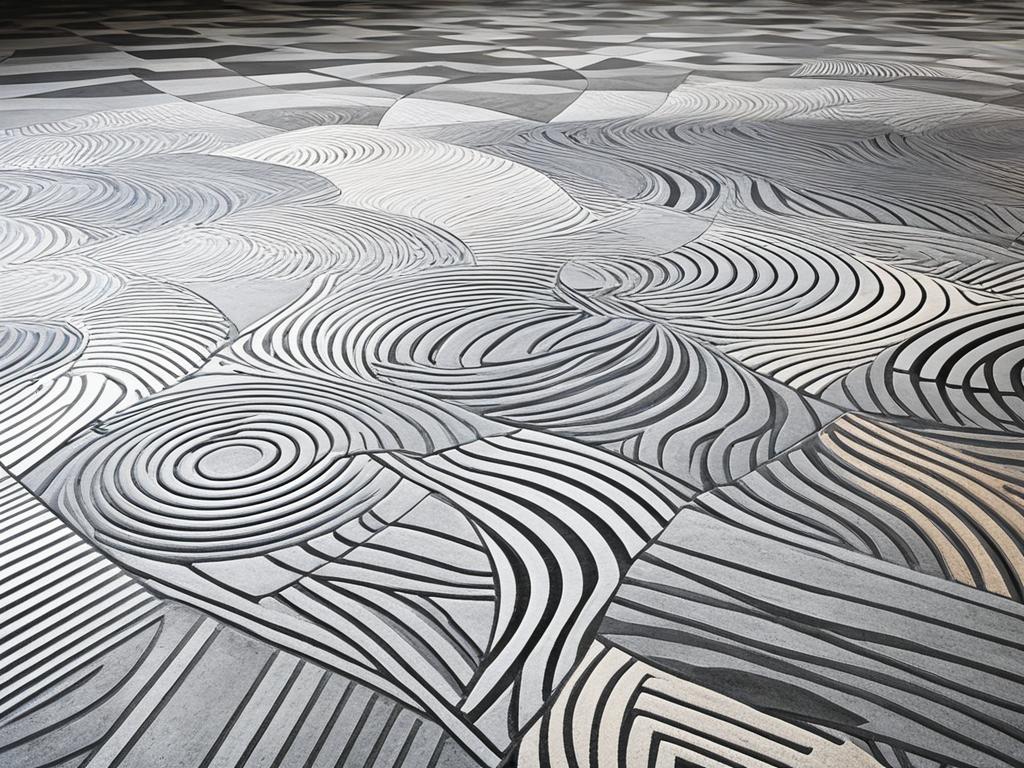
Decorative concrete floors provide an opportunity to elevate the design of your space and make a lasting impression. With countless design options and the ability to mimic the appearance of high-end materials, decorative concrete offers both style and affordability.
With creative options and the versatility of decorative concrete, you can truly transform your floors into works of art. Whether you’re looking to add personality to your home or enhance the visual appeal of a commercial space, decorative concrete is a fantastic choice.
Comfort and Health Benefits of Concrete Floors
Contrary to common misconceptions, concrete floors can provide comfort and health benefits. According to the third source, the hardness of concrete can be remedied by using padded mats in high-traffic areas and cushion or area rugs for added comfort. Concrete floors are also beneficial for indoor air quality, as they do not collect allergens, dust mites, or bacteria like carpeting can. Additionally, concrete is moisture-resistant, preventing the growth of mold and mildew. Being an inorganic material, concrete does not encourage the growth of toxic mold, making it a healthier option for homes.
Safety, Durability, and Simple Maintenance of Concrete Floors
Concrete floors offer a range of advantages, including safety, durability, and simple maintenance. According to our sources, concrete floors have slip resistance properties that can be enhanced with non-skid additives or by mixing fine grit into the concrete during installation. This improves traction and reduces the risk of accidents, making concrete floors a safe choice for homes and commercial spaces.
Moreover, concrete is an incredibly durable material, capable of withstanding heavy foot traffic and resistant to scratches and abrasions. This durability makes it ideal for high-traffic areas such as retail stores, schools, and warehouses. With proper care and routine maintenance, concrete floors can maintain their integrity for many years, providing a long-lasting flooring solution.
As for maintenance, concrete floors are relatively easy to care for. Regular cleaning with a damp mop is usually sufficient to keep them looking their best. Unlike other flooring options, concrete does not require special treatments or harsh chemicals to maintain its appearance. This simplicity of maintenance saves time and effort, making concrete floors a convenient choice for busy households and commercial properties.
When it comes to repairs, concrete floors can also be easily restored. Small damages or imperfections can be patched with specialized products or by applying a micro-topping, which helps restore the floor’s original smoothness and appearance. Larger repairs may require professional assistance, but overall, maintaining and repairing concrete floors is straightforward and cost-effective.
“Concrete floors provide a safe and durable solution for homeowners and businesses. Their slip-resistant properties, durability, and simple maintenance make them a reliable choice for various indoor and outdoor spaces.”
To illustrate the safety, durability, and simple maintenance advantages of concrete floors, consider the following table:
| Advantages | Concrete Floors | Other Flooring Options |
|---|---|---|
| Safety | Slip-resistant with proper additives | May require additional treatments for slip resistance |
| Durability | Incredibly tough and resistant to scratching | Prone to scratching and wear over time |
| Maintenance | Regular cleaning with a damp mop | May require special treatments or cleaning products |
| Repairs | Easily patchable and restorable | Repairs can be more complex and costly |
As demonstrated by the table, concrete floors excel in terms of safety, durability, and maintenance, making them an attractive flooring choice for both residential and commercial applications.
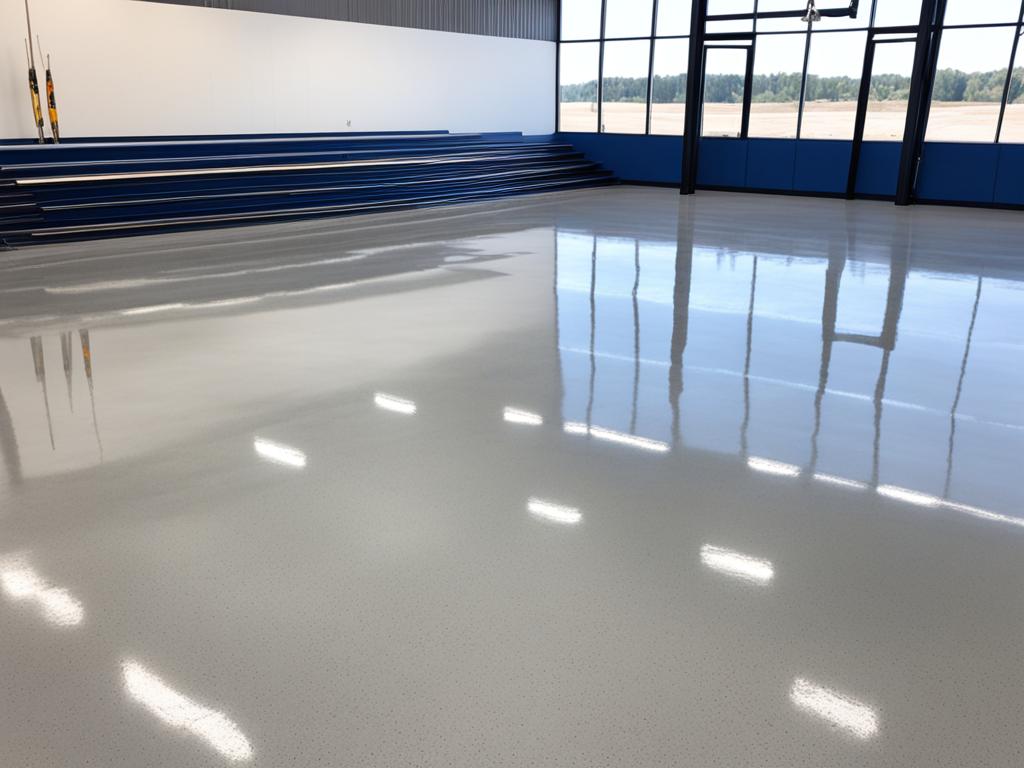
With the safety and durability advantages of concrete floors, along with their simple maintenance requirements, it’s clear that concrete floors offer exceptional value and long-term satisfaction for property owners. Whether for a home, office, or retail space, concrete floors provide a reliable and cost-effective flooring solution.
Conclusion
In conclusion, when comparing the cost of concrete slabs and wood floors, polished concrete floors emerge as the more cost-effective option with their significantly lower material costs. The benefits of polished concrete extend beyond affordability, as they offer high durability and a contemporary aesthetic. However, the decision between a concrete slab and a wood floor should also consider unique site conditions, design preferences, and other relevant factors. Both options have their advantages and can be suitable choices depending on the specific project requirements. Therefore, homeowners are encouraged to carefully weigh the cost and benefits in order to make an informed choice for their flooring needs.
FAQ
What is the cost difference between a concrete slab and a wood floor?
Concrete slabs are generally less expensive than wood floors. The material costs for polished concrete floors are six to eight times lower than that of hardwood floors. On average, hardwood floor installation can range from $12 to over $22 per square foot, while a cream polished concrete floor is generally $3.50 to $5 per square foot.
What are the benefits of polished concrete floors?
Polished concrete floors offer low, stable material costs, high durability, a more efficient installation process, and a modern, unique aesthetic. Polished concrete is also a labor-based process, which allows for pricing to be set in advance with minimal risk of cost fluctuations.
When should I consider using a concrete slab?
A concrete slab works well on relatively level sites with a floor level that is close to existing grade. It is also suitable for sites with high water tables or potential flooding. Concrete slabs are efficient for hydronic radiant heating systems due to their thermal mass.
What are the advantages of wood framed floors?
Wood framed floors with a crawlspace or basement below provide access to space that can be utilized for running utilities and storage. They are suitable for sloping sites or situations where the floor level will be significantly above the existing grade. Wood framed floors also allow for the use of gypcrete overlays, which can add rigidity and a solid feel to the floor.
What are the creative options and versatility of decorative concrete floors?
Decorative concrete allows for customization in terms of stone, color, and finish. The possibilities are nearly endless, making it possible to achieve the look of raw hardwood or mimic the appearance of stone without the high cost. Decorative concrete can be applied both indoors and outdoors, making it a versatile choice for various areas such as driveways, pool decks, patios, and more.
Are concrete floors comfortable and beneficial for health?
While concrete floors may be hard, comfort can be improved by using padded mats in high-traffic areas and cushion or area rugs for added comfort. Concrete floors are also beneficial for indoor air quality, as they do not collect allergens, dust mites, or bacteria like carpeting can. Additionally, concrete is moisture-resistant, preventing the growth of mold and mildew.
Are concrete floors safe, durable, and easy to maintain?
Slip resistance can be achieved with non-skid additives or by mixing fine grit into the concrete during installation. Concrete is incredibly tough and resistant to scratching, making it suitable for high-traffic areas. It is also easy to maintain, requiring only regular cleaning with a damp mop. Repairs can be easily done by patching the area or applying a micro-topping.
